
Developer: Gamious
Publisher: Gamious
Platform: PC(Steam, Windows Store), Android, iOs, PlayStation 4, PlayStation Vita, Xbox One
Tested on: PlayStation 4 Pro
iO – Review
Do you like testing the limits of your logic skills and your brain? Test your reaction speed and your cognitive skills? Then mind twisters and puzzling games might just do the trick for you. There is an extensive selection of brainteasers and puzzle games on the market and yet we haven’t seen all of them yet. Especially if you’ve had enough of stacking bricks in Tetris, crushing candy in candy crush or creating portals in Portal, than iO might be something for you. Gamious is the developer of what they call an action puzzle platformer where you control a ball through all kinds of obstacles and platforms. Hoping we didn’t fry our brains, we grabbed a controller to challenge the multitude of levels in iO.
Story
Let’s make it clear from the start; there is no story, no narrative, nothing. Can the lack of story be a problem for a game like iO? No, not at all because the focus of iO lies in its deep, challenging gameplay. Trying to cram a story mode in the game wouldn’t benefit the game at all. Aside from the lack of a story, it doesn’t offer a campaign mode either except for a selection of ten tutorial levels that enables you to learn the wayward and interesting mechanics and obstacles of the game.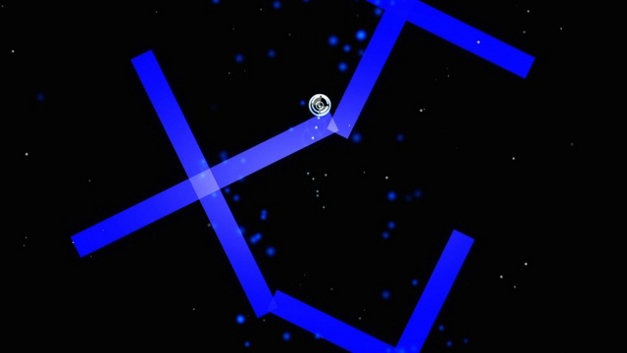
Graphics
iO isn’t the graphically inspiring game you would expect nowadays but the simplicity of this indie title has its own charm. Through clever use of a popping color pallet on a dark background and adding some neon glow effects, it creates a unique approach that fits this game and its gameplay perfectly. The different colors jump from your screen and the sleek design with simple shapes like rectangles gives a clear impression. The graphical design may even look similar to that of TRON. You don’t need any unnecessary objects or flashing signals floating around as it might only distract you from focusing on chasing the ball through the levels. The only downside might be the fact that it might become boring after playing multiple levels that almost have the exact same visual design. The menu’s also have a similar simplistic but efficient design that makes browsing through the multitude of levels swift and easy.
Sound
The auditory portion of iO isn’t as simplistic as its visuals. It’s combined through the use of incredibly pleasant lounge music with smooth, electronic tunes that are perfectly in tune with the overall gameplay experience. The music changes and improves slightly as you complete level after level but can still grow a tad boring after a few hours of playing. The music in the start menu isn’t really much different from the music playing in the background as you grind through the levels. You could say that it’s a simplified version of the tunes during gameplay.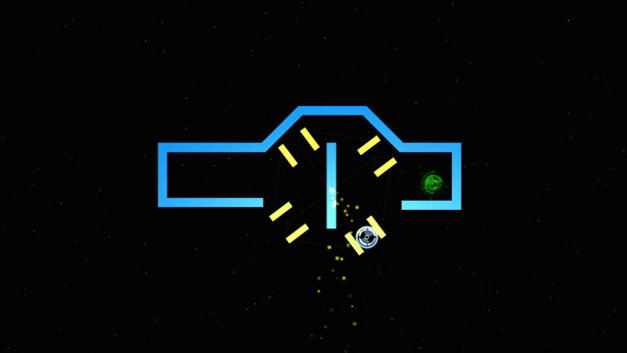
Gameplay
iO is a 2D puzzle platformer where you have the guide a ball through all kinds of labyrinth-like parcours and reach the green portal that looks like a tiny black hole. But don’t be mistaking as it isn’t easy as it sounds. As you try to complete the levels you’ll be facing realistic physical elements that will challenge your inner Isaac Newton and your poor brain. Physics is one of the core elements of iO as you can adjust the size of the ball and influence its weight. The bigger the ball, the heavier it becomes and the faster it will roll down a slope. While the smaller the ball might become, the easier it becomes to fit smaller spaces and stick to the track in order to complete large looping’s. You can even use the speed of a large ball rolling down a slope to launch it upwards another slope. While downsizing your ball, you can increase its speed and distance to cover large gaps. 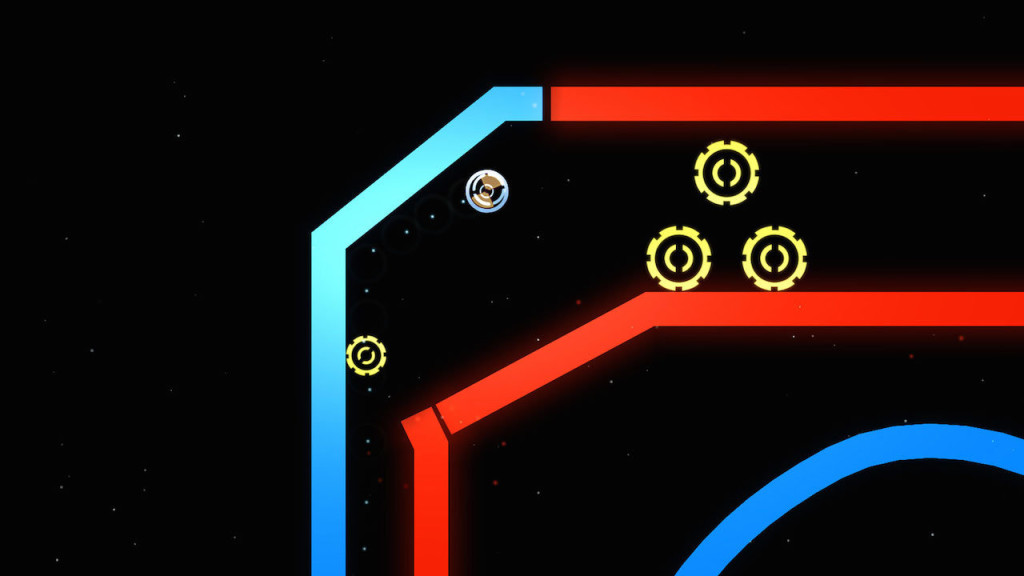
Through several levels you’ll learn how to handle the physics of the ball and the game. For example, how the ball rolls up a straight wall and the effect of artificial gravity. Aside from the ball’s physics, you can also influence or use certain objects in the levels. In the majority of the levels, you’ll have to use certain objects such as yellow rectangular plates or yellow wheels to your advantage. By rigging them with the ball, you can clear multiple obstacles and dangerous gaps. And if these objects weren’t enough for you, you can always try to use the purple elevating platforms or pink warp portals. But beware; do not touch the red zones in the levels as they might vaporize your ball faster than you can say ‘brainteasers’.
Physics and a colorful presentation give iO a unique identity, but the controller still throws quite a huge spanner in the works. A controller rolls the ball with the analog sticks, D-pad and triggers. Unfortunately, the latter two options give the least control over your speed, while the joysticks are quite bothered by what can be compared with a reflex that also appears in games like Sonic. Certain puzzles which force the ball through large looping’s, tend to make you move with your stick in the same way/direction the ball does. The controls in iO don’t recognize this kind of movement, so if you suddenly stopped in the middle of the loop, a second later you’d fall down. Another annoying factor with these loops is when you shrink the ball to complete the looping’s, the camera zooms in on the ball. This way, you’ll lose oversight of the level and your sense of direction.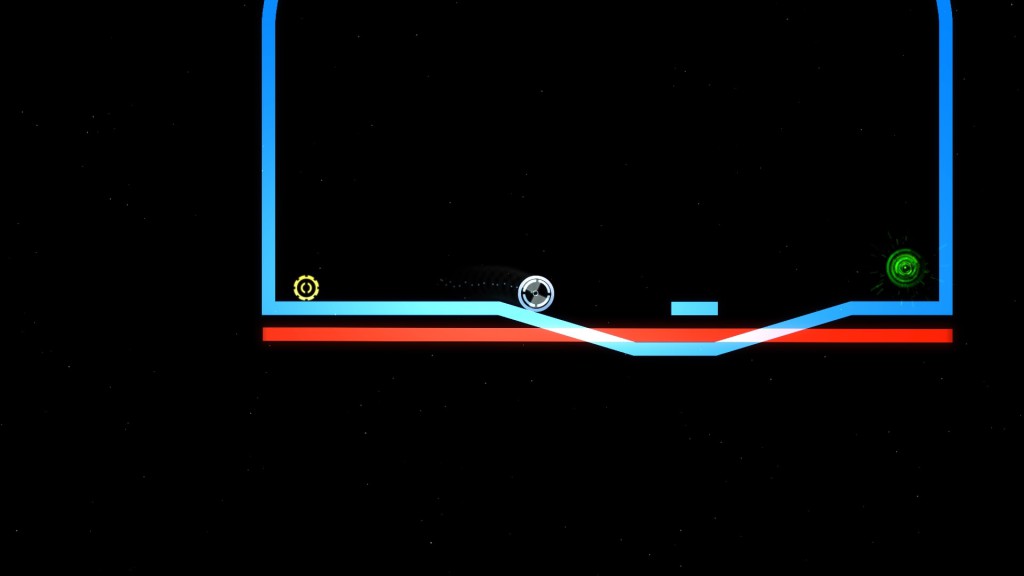
Although the combination of momentum and sound judgment always makes every level/puzzle something else, it’s questionable whether you’ll reach the end point. On the one hand, the degree of difficulty steadily increases the first hundred levels, but on the other hand, the later levels rise very quickly in challenge. In that perspective, the game is at that stage, repetition. All puzzles include variations on what you previously have been presented, so you get the feeling after about three hours that you have already done it all before. That really takes away the interest to continue and finish all of the levels. On the other hand, iO is perfect for short play sessions and if you need a breather from other game titles. A big plus is that there is a selection of 225 levels in this puzzle game. These are divided through three separate game modes. The tutorial mode spans over ten levels, while the original mode grants you 150 levels to grind your teeth on. And if there are addicts who can’t get enough and crave for a harder challenge, they can always test their mettle in the Irresistible levels mode. This mode grants them another 75 levels that will challenge their brain to its limits. But be warned, they might cause a severe headache.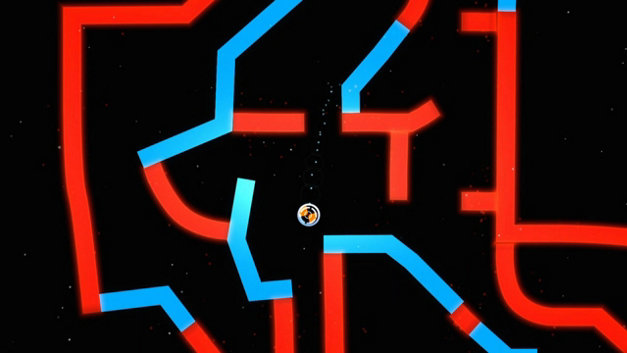
Conclusion
iO is a quirky and challenging puzzle platforming game with interesting mechanics and a strong presentation. Unfortunately, aside that it has some strong merits, it’s still plagued with a few flaws such as annoying camera-controls and gameplay that might become repetitive after long game sessions. The game offers enough challenge for the seasoned puzzle fan and enough appealing aspects to seduce new players to try it out. At least we were fond of it, especially as it’s available on multiple platforms and the low price makes this game a bargain.
iO - Review,




No Comments